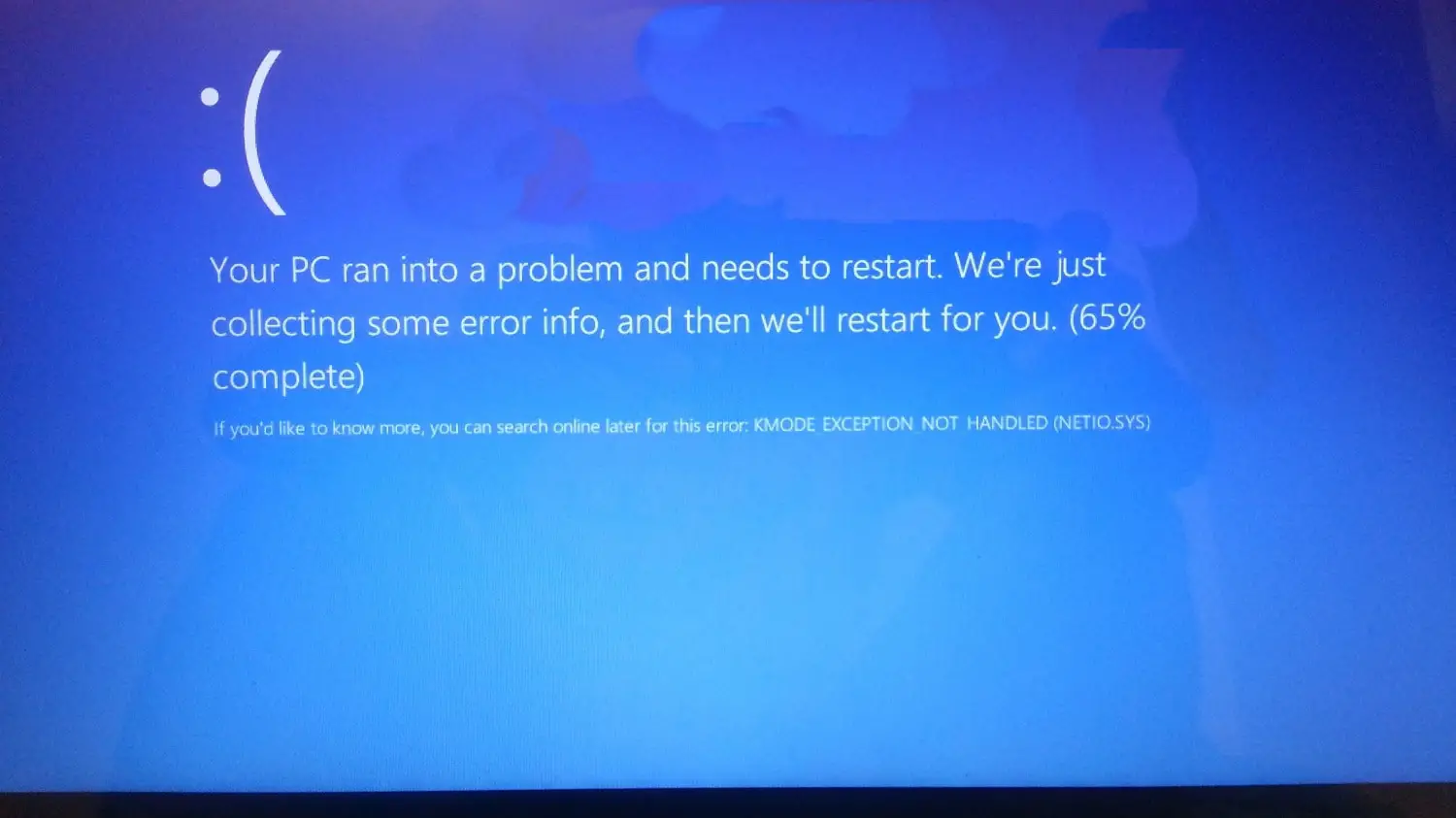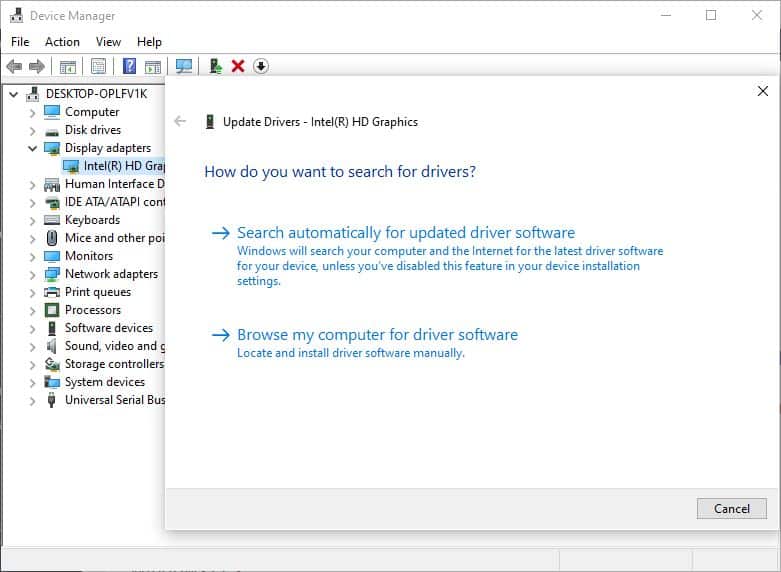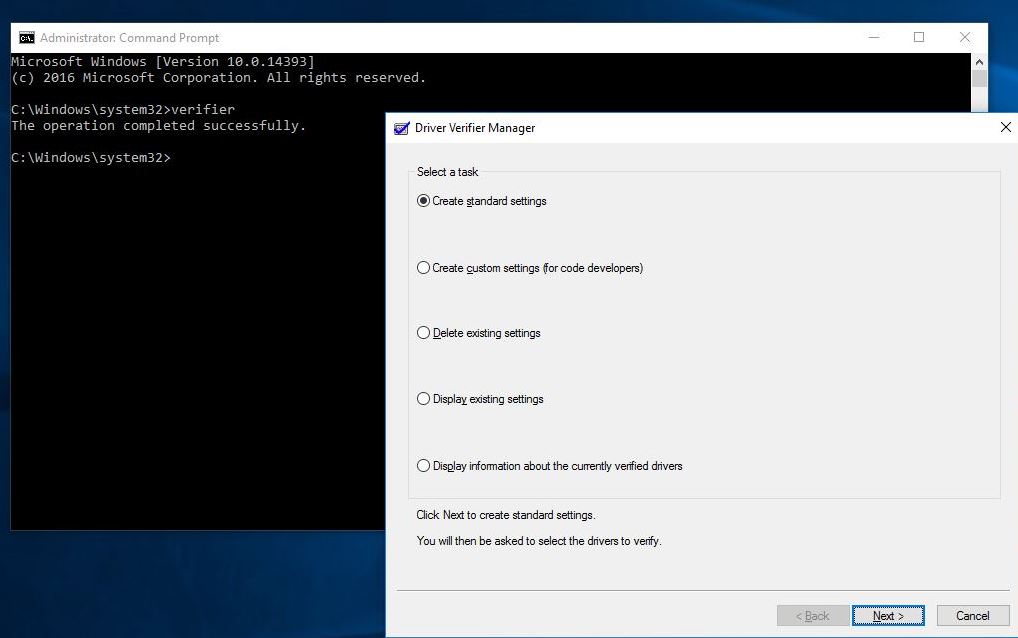Windows 10 BSOD kmode_exception_not_handled bug check value 0x0000001E occurs when the exception produced by a kernel-mode program is not handled well by an error handler. When this error occurs the system crashes and gets to the point where it can no longer operate in normal mode, turning the entire screen to blue in color with several lines of error code Like.
Your PC ran into a problem and needs to restart. We’re just collecting error info, And then we’ll restart for you. ( 65 % Completed )
If you’d like to know more, you can search online later for this error kmode exception not handled
Most of the time incorrectly configured device drivers can cause this type of error. Also corrupted registry database, Driver conflict issue of installing new hardware and bed memory (RAM) module results this BSOD Error. If you are also struggling with this windows 10 kmode_exception_not_handled BSOD error, here are some effective solutions you may apply.
kmode_exception_not_handled
If you notice the problem started after installing a new hardware device, We recommend disconnect all external devices include printer, scanner, and external HDD, and starting windows normally. If windows start normally then any of the external devices causing the problem you have to find it out.
kmode exception not handled boot loop
If Due to this kmode exception not handled BSOD windows 10 unable to boot to the device, I suggest you to download Windows 10 ISO file, create an installation media from other working computer to perform Startup Repair of the computer that you are unable to boot. Using ISO file to perform Startup Repair will allow the device to boot the system to Windows Recovery Environment and tries to repair the device.
Perform the Startup Repair:
- Insert the windows 10 Installation media or USB and restart windows
- Access BIOS setup and change first boot from CD/DVD or USB
- After you boot your computer using Windows 10 DVD, a black screen appears with gray text “Press any key to boot from CD or DVD“. Press any key.
- Select the correct time and Keyboard type.
- Click Repair your computerin the lower left corner
- Click on Troubleshooting, advanced option and then click Startup Repair.
If Startup Repair detects any of these types of problems, it will automatically attempt to fix them. If Startup Repair can fix the problem, it will do so without any intervention. It will then restart the system and boot normally check problem solved
If startup repair didn’t fix the problem, start windows into safe mode and perform the troubleshooting steps below.
Disable Fast Startup
Microsoft has brought a new cool feature (Fast Startup) on Windows 10 and 8 that helps your PC for fast boot. In most cases, It helps people to have a great experience. But, For some older or incompatible PCs, It can be a curse by causing blue screen problems. Else, Many peoples claimed that disabling the fast startup feature helps to fix kmode_exception_not_handled BSOD on windows 10.
To disable Fast Startup follow these steps:
- Search for “Control Panel” in the Windows search bar and select the corresponding result.
- Click “System and Security,” followed by “Power Options.”
- On the left-hand menu, select “Choose what the power buttons do.”
- If prompted, select the “Change settings that are currently available,” blue link at the top of the page.
- Under the heading “Shutdown settings,” untick the box that says “Turn on Fast Startup.”
- When done, click “Save changes.”
Run Windows Memory Diagnostics
Windows Memory Diagnostic is a system memory test. It can help check the computer’s RAM for problems. During the test process, there will be a status bar showing you if any problems have been detected. Also, Windows Memory Diagnostics can help check the kmode exception not handled error.
- Open Windows memory diagnostics through searching from the search box of Windows 10;
- Click Restart now and check for problems (recommend).
- After running this tool if you find the problem on Memory then you must replace the physical RAM and check.
Installing missing or corrupt drivers
Drivers are a key part of the operating system because Windows 10 uses drivers in order to work with your hardware. If a certain driver is outdated or corrupted, that can cause kmode_exception_not_handled. Incompatibility is most likely to occur if you have recently upgraded your OS to Windows 10. Drivers may also become corrupt without any obvious reason.
To check if the error is caused by a faulty drive, run an automatic driver update or manually update the drivers to the latest available versions. Install the latest drivers for any newly installed hardware device. If no new hardware has been installed, make sure you have the latest drivers for the below devices.
- Video card
- Network card or router (if present)
- Any removable or external disk drive
update display driver software
- Press Windows + R, type devmgmt.msc, and ok to open the device manager.
- This will display all installed device driver lists.
- You just have to find the device which is yellow marked.
- Right-click on the device and select update driver software and follow the instruction to get driver updates.
- If you didn’t find any update for the driver you can uninstall it from here.
- Download the best driver for the specific device from the manufacturer’s website and install it.
Find The Problematic Driver And Disable
If after the driver update or reinstall still you getting the problem, then we recommend to find out the problematic driver and disable it.
- To do this press Win + R and type Verifier hit the enter key.
- This results in the opening up of a new window named Driver Verifier Manager. Among the options, check the radio button corresponding to Create standard settings. Click on the Next button at the bottom.
- As next, check the radio button corresponding to Automatically select all drivers installed on this computer, before proceeding to click on the Finish button.
When asked for Restart confirmation, click on Ok and reboot the system. This will give you the list of drivers that will be verified during startup.
For a damaged driver, the respective error note will contain a Blue Screen of Death indication. These drivers are to be disabled in order to resolve the issue of Blue Screen of Death.
But before disabling, the verifier needs to be reset, as it will examine all the drivers listed, during every startup. It can be done by typing the verifier/reset in Cortana and by pressing Enter.
Now to uninstall the faulty driver, which is causing havoc, open the Device Manager window just like before. Expand all the lists and look for a device that’s listed as Unknown with a yellow warning sign. Right-click on the device and then on Uninstall to get rid of it.
Run an SFC utility to repair corrupted files
Windows system files are an important part of OS to run smoothly. And if any system file gets corrupted, damaged, or missing then the windows start misbehaving like show errors, startup problems, BSOD errors, and may this Inaccessible Boot Device is one of them. Run the Windows system file checker utility to repair or restore missing system files.
To Run the system file checker utility on windows 10
- Open the command prompt as administrator,
- Type the command sfc /scannow and ok to run the SFC utility.
- This will scan your system for all its important system files, and replace them where necessary.
- Wait until Windows scans and repairs system files.
- Restart Windows after 100% complete the scanning process.
- Check there is no more Windows 10 BSOS problem.
Did these solutions help to fix kmode exception not handled BSOD error? Let us know on the comments below, also read:






